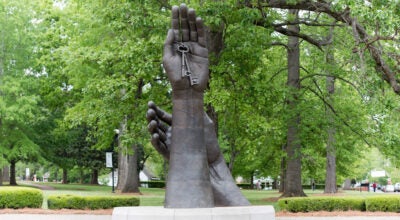Enrollment growing at the University of Montevallo
Published 11:06 am Thursday, August 15, 2013
By STEPHANIE BRUMFIELD / Staff Writer
MONTEVALLO – In response to the continued decline of state financial support of higher education institutions, the University of Montevallo will continue to push for and see growth in the number of freshman and undergraduate students enrolled at the university this fall, growth which administrators say has kept costs low while maintaining quality education.
The number of incoming freshman at the University of Montevallo is expected to grow for the third year in a row with 580 freshman expected at the university this fall, an increase of more than 30 percent since 2010, said Vice President of Enrollment Management Rick Barth. Total enrollment is expected to break 2,600 students.
While growth has been steady but slow, UM President John Stewart said this is exactly the goal.
“We’re going to grow, but we’re going to grow smart and measured,” Stewart said. “We have nearly a 30 percent decline in state funding, and we didn’t want students to bear all of that loss in tuition increases.”
In fact, University of Montevallo students, on average, graduate with half the debt of students at other schools in Alabama. While the state average for student debt upon graduation is around $24,000, Barth said Montevallo students average about $12,000 in debt when they graduate.
By increasing the number of undergraduates enrolled and living on campus this fall, Barth said about $350,000 will be generated in revenues, which the university can then use to offset funding cuts and keep tuition costs low. Stewart also said such a revenue stream allows the university to “increase salaries for our faculty and staff, address deferred maintenance and keep our campus one of the most beautiful in the south.”
Barth and Stewart both mentioned the quality of education at UM has remained steady despite growth in enrollment. Barth said minimum admissions standards have been maintained at a 2.5 GPA and 20 ACT, with scholarships considered for students with ACT scores 24 and above.
Next year, Barth said the goal is to bring in a little more than 600 students.
“We will cap,” Stewart said. “It’s our state mandate to be small and provide that 17:1 student-faculty ratio. We’ll continue to assess that as we go and seek input from faculty and staff.”









